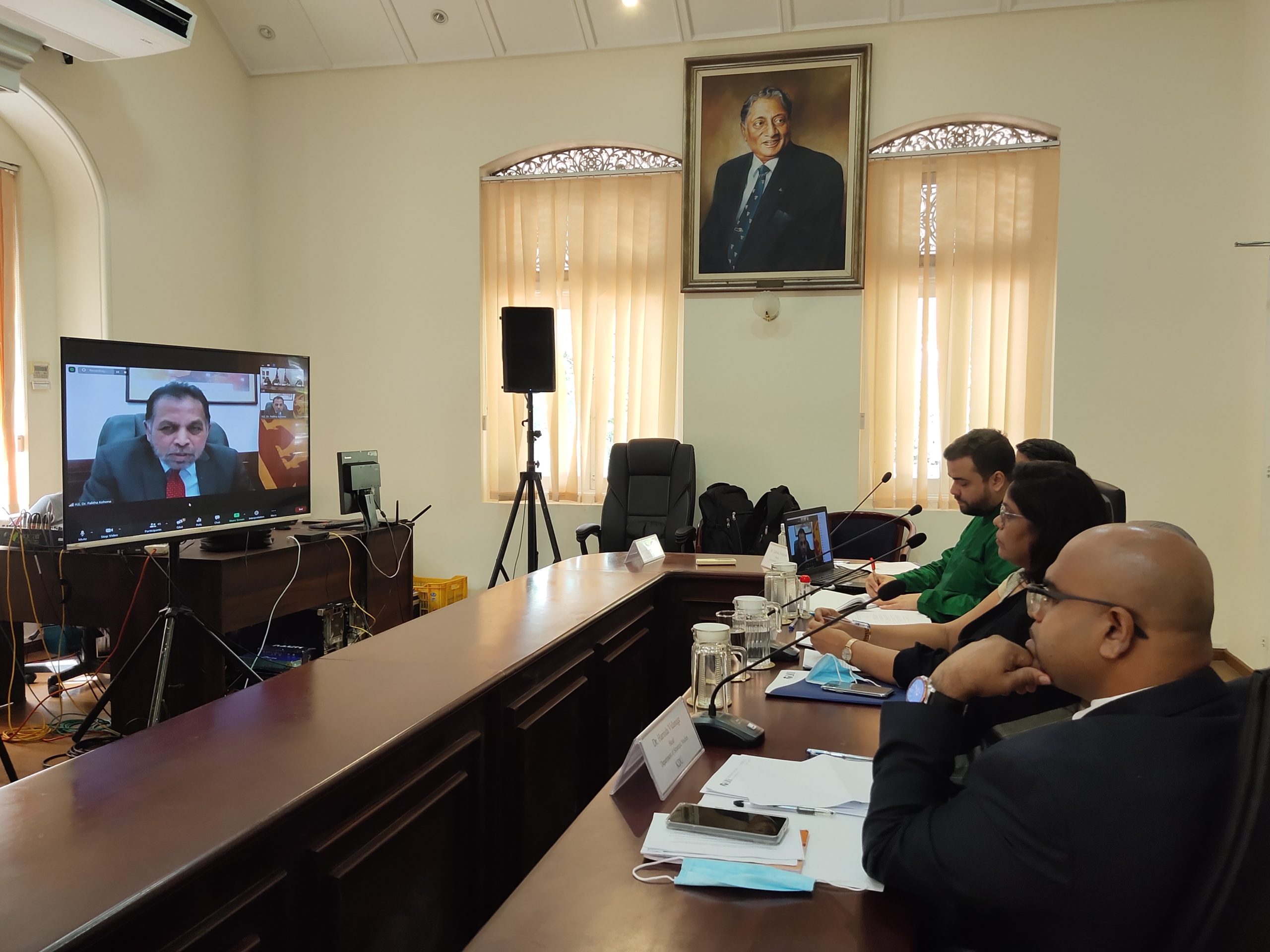Takeaways – Responsibility to Protect (R2P) and National Sovereignty
July 9, 2021 Reading Time: 3 minutes

Reading Time: 3 min read
Three key takeaways from the webinar ‘Responsibility to Protect (R2P) and National Sovereignty’:
- The intentions that accompany any actions when invoking R2P needs to be transparent and devoid of strategic calculations of individual states and alliances.
- To universalise R2P as a global norm – the process of determining crimes worth invoking R2P must pass an acceptable standard of objectivity.
- There is a need to broaden the scope of R2P to take into account other material conditions of populations that are often the trigger points of future conflict.
Introduction
- The Lakshman Kadirgamar Institute of International Relations and Strategic Studies (LKI) hosted a webinar titled ‘Responsibility to Protect (R2P) and National Sovereignty’ on 08 February 2021.
- The panellists were: H.E. Dr. Palitha Kohona, Ambassador of the Democratic Socialist Republic of Sri Lanka to the People’s Republic of China; Dr. Dayani Panagoda, Senior Technical Specialist, Global Communities; and Dr. Harinda Vidanage, Head, Department of Strategic Studies, General Sir John Kotelawala Defence University (KDU).
- The discussion was moderated by Mr. George Cooke, Deputy Director, Bandaranaike Centre for International Studies (BCIS).
Takeaways from the Discussion:
Who Gets to Decide when R2P Should be Invoked?
- The resolution on R2P adopted in 2005 at the United Nations made it clear that the responsibility to protect civilians belonged to the international community, and should not be restricted to a select few countries.
- There is an absence of clarity on who can adjudicate objectively whether a crime falling under the scope of R2P has indeed taken place. In addition, the international community needs to address the question when will this responsibility be exercised and in what circumstances.
- International observers have expressed doubt if external interventions, especially military interventions were warranted in the first place.
- History shows us that in some cases the external interventions have exacerbated conditions transforming small-scale unrest and killings to a full-scale humanitarian crisis.
Ensuring Greater Accuracy in Incident Reporting
- Media organisations, particularly ones with international affiliations have in the past either intentionally or unwittingly engaged in the omission, misrepresentation, or exaggeration of facts in their reporting.
- In some cases, the global human rights community and other actors with vested interests have inaccurately framed events to misrepresent them as crimes identifiable under the R2P principle.
Decoupling R2P from Strategic Interests
- Interventions in the recent past may not have been motivated by the principle of wanting to serve humanity or save human lives but rather, the need to advance strategic interests or economic interests.
- Past interventions based on strategic interests have created a credibility gap that has made large segments of the international community reluctant to fully accept a principle that may undermine their national sovereignty.
- In the past five to six years the international system has shifted priorities occupying a more strategic posture from one that aimed to encompass more normative values on global governance. R2P, which emerged as a norm in the previous era is caught between these shifting priorities in the international system.
R2P and Peace Building
- Despite some policy makers viewing R2P and peacebuilding as two different domains, the two share a convergence in many of their policy recommendations including; strengthening justice systems, conducting fair elections, and addressing underlying grievances in vulnerable societies.
- The responsibility to rebuild, show recovery, reconstruction, and reconciliation is crucial in eventually breaking the conflict trap that sees the repeated patterns of civil unrest, insurgencies, and wars. Interventions should shift from a state centric approach to ones that are more tailored to each community.
- Human security, foreign policy, national security policy, and development share many strategic links despite the tendency to compartmentalise these elements. As a country coming out of two insurgencies and war that spanned over three decades, Sri Lanka needs to view the interconnectedness of these elements.
